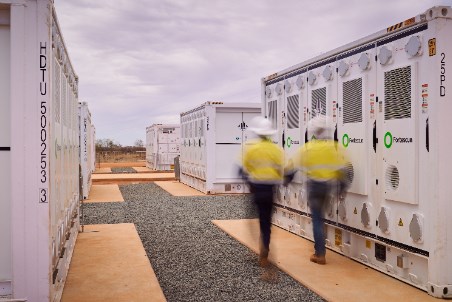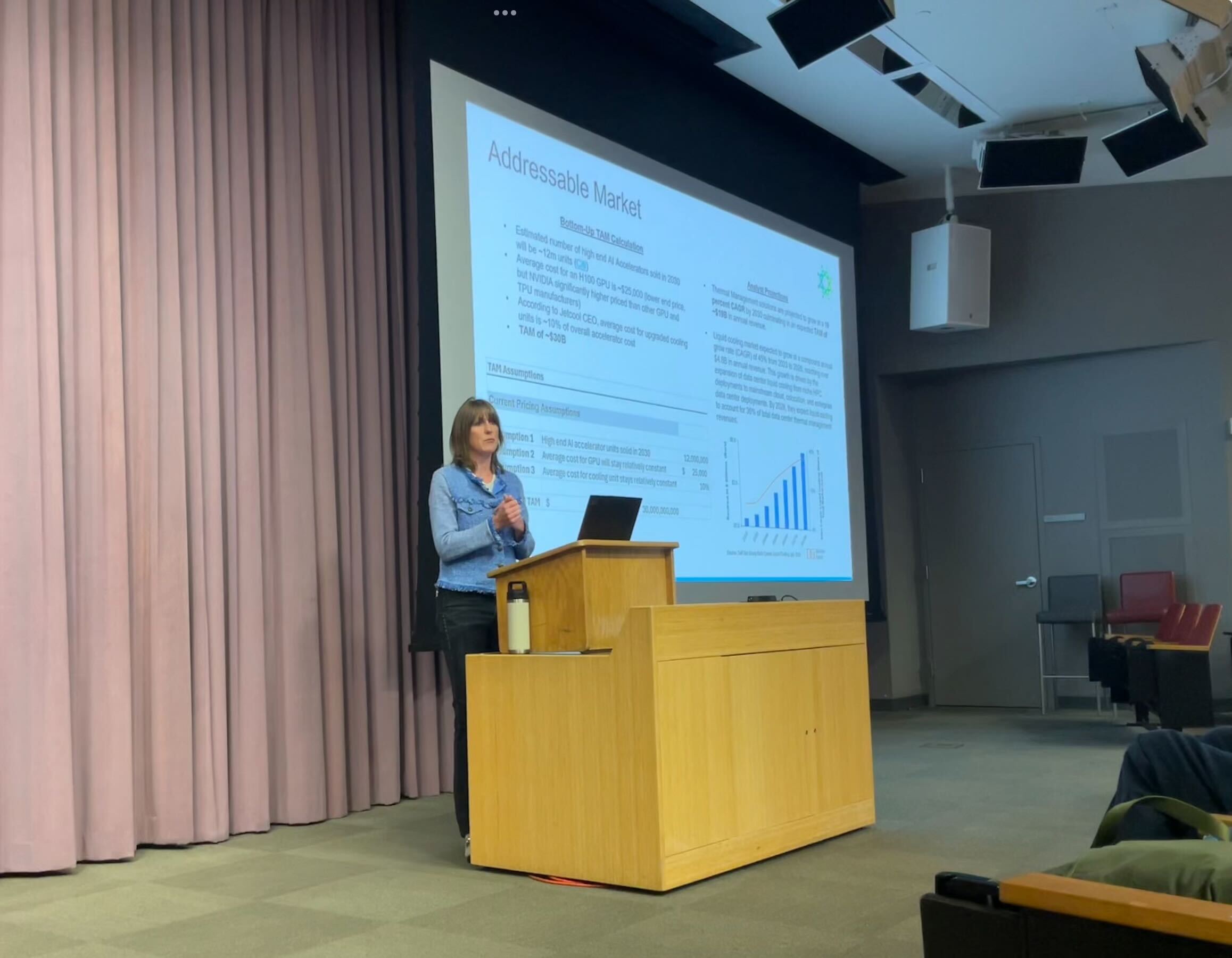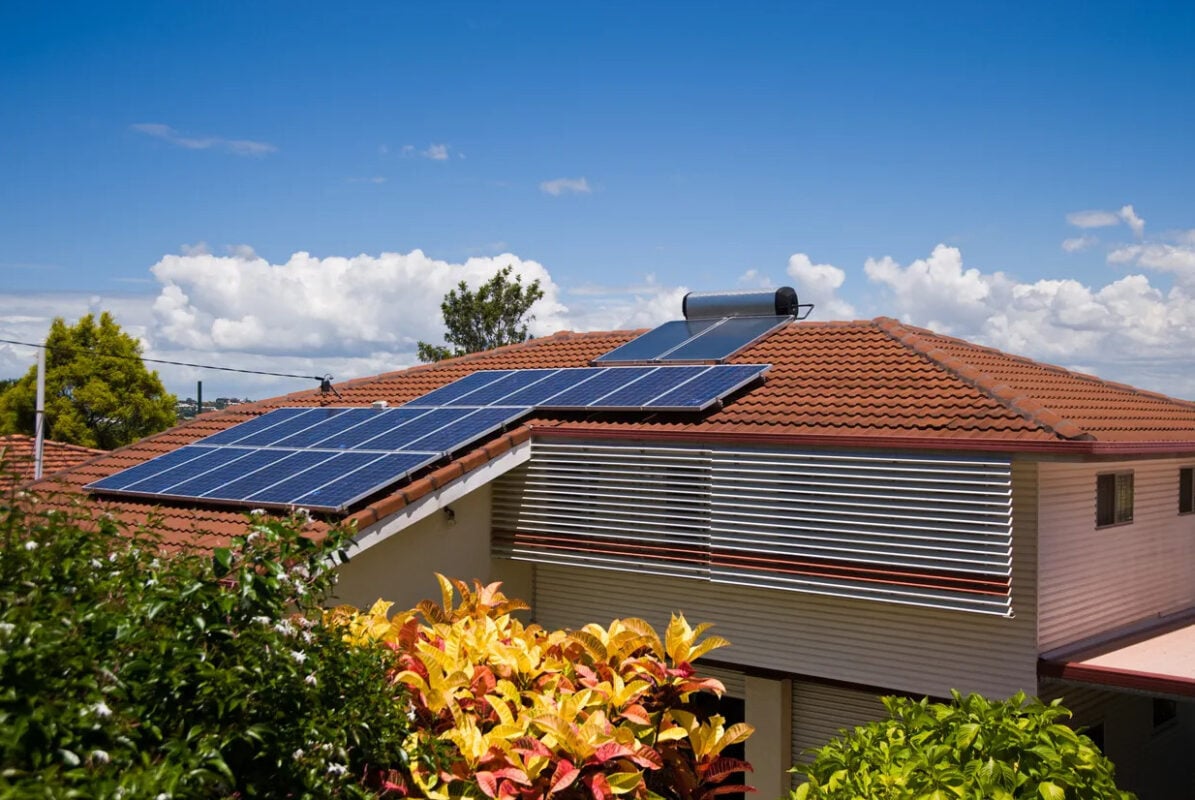Opinion: Georgia deserve clean energy, a prescription for affordability and health – AJC.com

Report on Georgia’s Energy Policy and its Alignment with Sustainable Development Goals
Executive Summary
This report analyzes the state of Georgia’s energy policy, focusing on recent decisions by the Georgia Public Service Commission (PSC). It evaluates the economic, environmental, and public health impacts of these policies through the framework of the United Nations Sustainable Development Goals (SDGs). The analysis reveals a significant misalignment between current energy strategies and key global objectives, particularly concerning affordable and clean energy (SDG 7), good health and well-being (SDG 3), and climate action (SDG 13). The upcoming PSC election is identified as a critical event for determining the state’s future commitment to sustainable development.
Analysis of Georgia’s Energy Landscape and Economic Impact
Energy Affordability and Economic Inequality (SDG 7 & SDG 10)
The current energy framework in Georgia presents substantial challenges to achieving affordable energy and reducing economic inequality.
- Rising Consumer Costs: Georgia Power customers have experienced six rate hikes in two years, resulting in an average annual bill increase of $500. This trend directly conflicts with the objectives of SDG 7 (Affordable and Clean Energy).
- Economic Hardship: High energy bills disproportionately affect low-income households, forcing choices between essential needs and power service, thereby exacerbating conditions targeted by SDG 10 (Reduced Inequalities).
- Dependence on Expensive Energy Sources: The state’s heavy reliance on costly nuclear, gas, and coal for electricity generation is a primary driver of high consumer prices.
Underutilization of Renewable Energy (SDG 7 & SDG 12)
Despite the availability of more cost-effective and sustainable alternatives, Georgia has not fully capitalized on its renewable energy potential.
- Lagging Solar Adoption: Georgia ranks 47th in the nation for solar energy per capita, with only 7% of its electricity generated from solar. Rooftop solar is present in only 0.4% of households.
- Policy Barriers: Decisions by the Georgia PSC are cited as a significant barrier to the expansion of solar energy, hindering progress toward SDG 7 and SDG 12 (Responsible Consumption and Production).
- Missed Opportunities: Innovative solutions, such as solar canopies on hospital parking lots and warehouses, which have proven effective in other states for generating clean energy and reducing costs for vulnerable populations, remain largely unimplemented.
Public Health and Environmental Consequences
Health Impacts of Fossil Fuel Dependency (SDG 3)
The PSC’s recent approval for a rapid expansion of fossil fuel combustion poses a direct threat to public health, undermining SDG 3 (Good Health and Well-being).
- Air Pollution and Premature Deaths: The burning of coal at facilities like Plant Bowen emits soot (particulate matter) pollution linked to annual premature deaths among Georgians.
- Deteriorating Air Quality: Metro Atlanta ranks 67th worst in the nation for ozone pollution, a condition expected to worsen with the approved expansion of new methane gas infrastructure.
- Increased Respiratory Illness: Scientific data has identified specific areas in Georgia with the highest rates of children hospitalized in intensive care for asthma, directly associated with soot and ozone pollution from fossil fuels.
Climate Change and Environmental Degradation (SDG 13 & SDG 11)
The state’s energy policy contributes to climate change, with severe consequences for communities and ecosystems.
- Extreme Weather Events: The scientific community has established that climate pollution from fossil fuels intensifies extreme weather events, such as Hurricane Helene, which caused multiple fatalities in Georgia. This directly contravenes the goals of SDG 13 (Climate Action).
- Threats to Sustainable Communities: The impacts of climate change, including more powerful storms and their effects on critical supply chains, threaten the safety and resilience of communities, a core focus of SDG 11 (Sustainable Cities and Communities).
Governance and Institutional Accountability (SDG 16)
Role and Actions of the Public Service Commission
The PSC’s mission is to ensure safe, affordable, and reliable electricity. However, recent actions have raised concerns about its alignment with public interest and sustainability goals.
- Prioritizing Fossil Fuels: The commission has approved a significant expansion of fossil fuel infrastructure while simultaneously cutting energy-saving programs that could have reduced overall energy demand.
- Ignoring Public and Expert Input: Reports indicate that the PSC has largely disregarded verbal and written testimony from healthcare professionals, concerned residents, and students advocating for a transition to clean energy. This lack of responsiveness challenges the principles of SDG 16 (Peace, Justice and Strong Institutions).
- Regulatory Framework: The current system allows the utility monopoly to profit from the expansion of fossil fuels, creating a conflict of interest that disincentivizes the adoption of cleaner, more affordable energy solutions.
Conclusion: The Path Toward a Sustainable Future
Recommendations for Aligning with SDGs
To create a cleaner, more affordable, and healthier future, Georgia’s energy policy must be realigned with sustainable development principles.
- Modernize Regulatory Frameworks: Adopt new regulations that incentivize utilities to achieve efficiency and clean energy targets, directly supporting SDG 7 and SDG 12.
- Promote Renewable Energy: Remove policy barriers and actively encourage the development of rooftop and community solar to increase access to clean, affordable energy.
- Prioritize Public Health: Integrate public health outcomes into energy planning by phasing out high-polluting fossil fuel plants, in accordance with SDG 3.
- Strengthen Institutional Accountability: Ensure that regulatory bodies like the PSC are responsive to public input and operate transparently to uphold the tenets of SDG 16.
The Importance of the PSC Election
The upcoming election for two PSC commissioner seats provides a direct opportunity for citizens to influence Georgia’s energy trajectory. The outcome will be pivotal in determining whether the state embraces a sustainable path aligned with global goals for health, climate action, and economic justice, or continues with policies that undermine them.
Analysis of Sustainable Development Goals in the Article
1. Which SDGs are addressed or connected to the issues highlighted in the article?
The article discusses several interconnected issues related to energy policy, public health, environmental quality, and governance in Georgia. Based on this, the following Sustainable Development Goals (SDGs) are addressed:
- SDG 3: Good Health and Well-being: The article explicitly links the burning of fossil fuels to severe health hazards, such as air pollution causing premature deaths and respiratory illnesses like asthma, particularly in children. It also connects climate change to public health threats like more powerful hurricanes.
- SDG 7: Affordable and Clean Energy: This is a central theme. The article critiques Georgia’s reliance on expensive and polluting energy sources (coal, gas, nuclear) while highlighting the high cost to consumers (“high power bills”). It strongly advocates for a transition to cleaner and more affordable alternatives like solar energy.
- SDG 11: Sustainable Cities and Communities: The article points to the poor air quality in urban areas, stating that “Metro Atlanta ranks 67th worst in the nation for ozone pollution.” This directly relates to the goal of making cities and human settlements inclusive, safe, resilient, and sustainable by addressing environmental impacts like air pollution.
- SDG 13: Climate Action: The article directly addresses climate change by linking “fossil pollution” to “rising global temperatures” and “extreme weather.” It cites Hurricane Helene, which was “made stronger and more powerful by climate pollution,” as a clear example of the urgent need for climate action.
- SDG 16: Peace, Justice and Strong Institutions: The article scrutinizes the effectiveness and responsiveness of a key public institution, the Georgia Public Service Commission (PSC). It criticizes the PSC for decisions that favor fossil fuels over public interest and for having “ignored public comments,” pointing to a need for more accountable, inclusive, and representative decision-making.
2. What specific targets under those SDGs can be identified based on the article’s content?
Several specific SDG targets can be identified from the issues discussed in the article:
- Target 3.9: By 2030, substantially reduce the number of deaths and illnesses from hazardous chemicals and air, water and soil pollution and contamination.
- Explanation: The article directly connects to this target by describing how “soot (particulate matter) pollution that kills Georgians every year” and how “soot and ozone pollution” are associated with “the highest rates of children hospitalized in intensive care for asthma.”
- Target 7.1: By 2030, ensure universal access to affordable, reliable and modern energy services.
- Explanation: The article highlights the failure to meet the “affordable” aspect of this target, noting that “Georgia Power customers’ bills are on average $500 more per year than just two years ago” and that “high energy bills force Georgians to choose between necessities or having their power cut off.”
- Target 7.2: By 2030, increase substantially the share of renewable energy in the global energy mix.
- Explanation: The article critiques Georgia’s slow progress on this target, stating that “Currently only 7% of electricity in Georgia is solar generated” and that the state ranks “47th for solar per capita.” It advocates for realizing the state’s “rooftop solar potential.”
- Target 7.3: By 2030, double the global rate of improvement in energy efficiency.
- Explanation: The article points to a regression on this target, mentioning that “Energy saving programs that could have helped reduce energy needs were just cut by the PSC.”
- Target 11.6: By 2030, reduce the adverse per capita environmental impact of cities, including by paying special attention to air quality and municipal and other waste management.
- Explanation: This target is relevant due to the specific mention of urban air quality: “Metro Atlanta ranks 67th worst in the nation for ozone pollution,” which is a direct measure of the adverse environmental impact on a city.
- Target 13.2: Integrate climate change measures into national policies, strategies and planning.
- Explanation: The article is a critique of the PSC’s failure to integrate climate measures into its energy planning. The PSC’s decision to approve “a rapid expand of burning fossil fuels” is in direct opposition to this target. The call for new leadership at the PSC is a call to change these policies.
- Target 16.7: Ensure responsive, inclusive, participatory and representative decision-making at all levels.
- Explanation: The article criticizes the PSC for not being a responsive or participatory institution, stating that commissioners “have ignored public comments of Georgians asking to stop expanding expensive and dirty fossil fuels.”
3. Are there any indicators mentioned or implied in the article that can be used to measure progress towards the identified targets?
Yes, the article mentions several specific data points and implies others that can serve as indicators to measure progress:
- Indicator for Target 3.9: The article implies the use of mortality and morbidity rates from air pollution as indicators, referring to pollution that “kills Georgians every year” and hospitalization rates for children with asthma.
- Indicator for Target 7.1: A direct indicator of energy affordability is mentioned: the average annual increase in electricity bills (“$500 more per year”).
- Indicators for Target 7.2: The article provides several clear indicators for the share of renewable energy:
- The percentage of electricity generated from solar power (“only 7% of electricity in Georgia is solar generated”).
- The state’s national ranking for solar adoption (“rank 47th for solar per capita”).
- The percentage of households with solar installations (“only 0.4% of households have rooftop solar”).
- Indicator for Target 11.6: A specific indicator for urban air quality is provided: the national ranking for ozone pollution (“Metro Atlanta ranks 67th worst in the nation”).
- Indicator for Target 16.7: While not a quantitative metric, the article implies an indicator related to public participation by noting that the PSC has “ignored public comments,” suggesting that the number or proportion of public comments considered in policy decisions could be a measure of responsiveness.
4. Summary Table of SDGs, Targets, and Indicators
| SDGs | Targets | Indicators |
|---|---|---|
| SDG 3: Good Health and Well-being | 3.9: Substantially reduce deaths and illnesses from air pollution. | Implied: Mortality rate from particulate matter pollution; Hospitalization rates for childhood asthma linked to ozone and soot. |
| SDG 7: Affordable and Clean Energy | 7.1: Ensure universal access to affordable, reliable and modern energy. | Average annual increase in customer electricity bills (e.g., “$500 more per year”). |
| 7.2: Increase substantially the share of renewable energy. | Percentage of electricity from solar (7%); Percentage of households with rooftop solar (0.4%); National ranking for solar per capita (47th). | |
| 7.3: Double the rate of improvement in energy efficiency. | Status of energy-saving programs (e.g., “were just cut by the PSC”). | |
| SDG 11: Sustainable Cities and Communities | 11.6: Reduce the adverse per capita environmental impact of cities, especially air quality. | National ranking for urban ozone pollution (Metro Atlanta ranks 67th worst). |
| SDG 13: Climate Action | 13.2: Integrate climate change measures into national policies and planning. | Policy decisions regarding fossil fuel expansion (e.g., PSC approval for “a rapid expand of burning fossil fuels”). |
| SDG 16: Peace, Justice and Strong Institutions | 16.7: Ensure responsive, inclusive, and participatory decision-making. | Implied: The extent to which public comments are considered in institutional decision-making (e.g., PSC “ignored public comments”). |
Source: ajc.com
What is Your Reaction?
 Like
0
Like
0
 Dislike
0
Dislike
0
 Love
0
Love
0
 Funny
0
Funny
0
 Angry
0
Angry
0
 Sad
0
Sad
0
 Wow
0
Wow
0




















































.jpg.webp?itok=0ZsAnae9#)



























